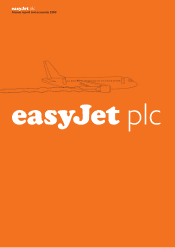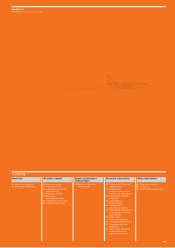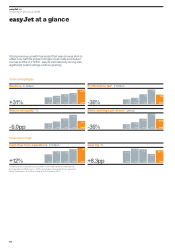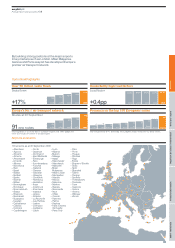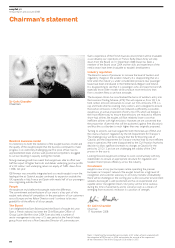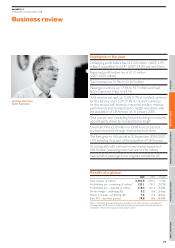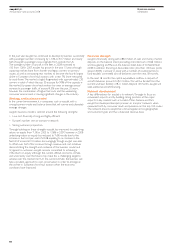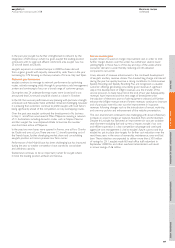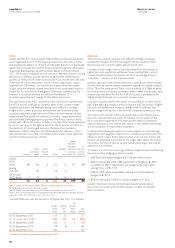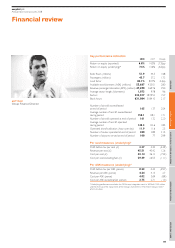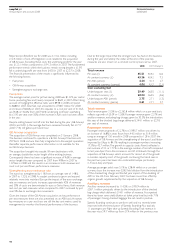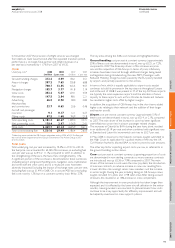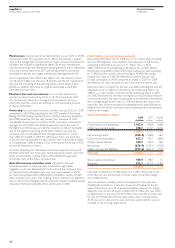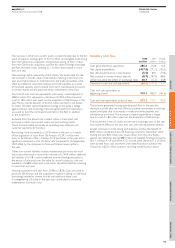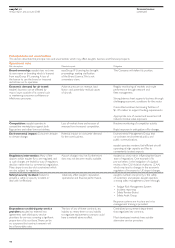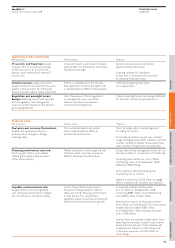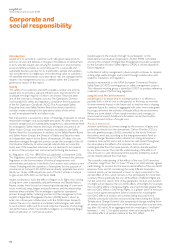EasyJet 2008 Annual Report Download - page 8
Download and view the complete annual report
Please find page 8 of the 2008 EasyJet annual report below. You can navigate through the pages in the report by either clicking on the pages listed below, or by using the keyword search tool below to find specific information within the annual report.
easyJet plc
Annual report and accounts 2008
Business review
continued
In the past year easyJet has continued to develop its business successfully
with passenger numbers increasing by 17.3% to 43.7 million and nearly
half of easyJet’s passengers now originate from outside the UK.
The average number of aircraft in the fleet in 2008 increased to
150 from 128 in 2007. easyJet has grown in the past 13 years through
capturing market share from charter and legacy carriers on primary
routes, as well as stimulating new markets to become the fourth largest
airline in European short-haul aviation, with a near 7% share measured
by seats flown. The market is highly fragmented with approximately 230
carriers in total of which the top 50 account for 90% of the capacity in
the market. European short-haul aviation has seen an average annual
increase in passenger traffic of around 4.5% over the past 20 years,
however the combination of higher fuel costs and the weakening
consumer environment is causing significant changes in the industry.
Strategy and business model
In the current environment it is companies such as easyJet with a
strong business model and balance sheet that will survive and ultimately
emerge stronger.
easyJet’s business model is centred around the following strengths:
• Low cost, financially strong and highly efficient;
• Europe’s number one air transport network;
• Strong customer proposition.
Through building on these strengths easyJet has improved its underlying
return on equity from 7.1% in 2005 to 13.6% in 2007, however in 2008
underlying return on equity has reduced to 7.6% mostly due to the
increase in fuel cost per seat of £4.08 equating to an increase in the
fuel bill of around £210 million. Encouragingly though, easyJet was able
to offset over half of this increase through revenue and cost initiatives
demonstrating the strength and resilience of the business model and
its appeal to customers. easyJet remains committed to achieving a
15% return on equity although the current difficult economic climate
and uncertainty over the future may make this a challenging target to
achieve over the medium term. In the current climate, the business will
take a prudent approach to cash conservation in order to emerge as
the winner in European short-haul aviation when the economic
conditions have improved.
Financial strength
easyJet is financially strong with £863 million of cash and money market
deposits on the balance sheet (excluding restricted cash of £66 million)
and low gearing at 29% as at the balance sheet date of 30 September
2008. In addition, financing at favourable rates (less than 100 basis points
above LIBOR) is already in place with a number of counterparties to
fund easyJet’s committed aircraft deliveries over the next 18 months.
In the next 18 months the capital expenditure outflow in respect of
aircraft deliveries amounts to $1.2 billion. This will be funded from the
current undrawn facilities of $1.1 billion. Beyond 18 months easyJet will
seek additional aircraft financing.
Network development
A key differentiator for easyJet is its network. Through its focus on
convenient airports and by building strong positions at the major
airports in key markets such as London, Milan, Geneva and Paris
easyJet has developed Europe’s premier air transport network when
measured both by consumer reach and presence on the top 100 routes.
The network ensures easyJet has a broad appeal across geographies
and customer types and thus a balanced revenue base.
06

